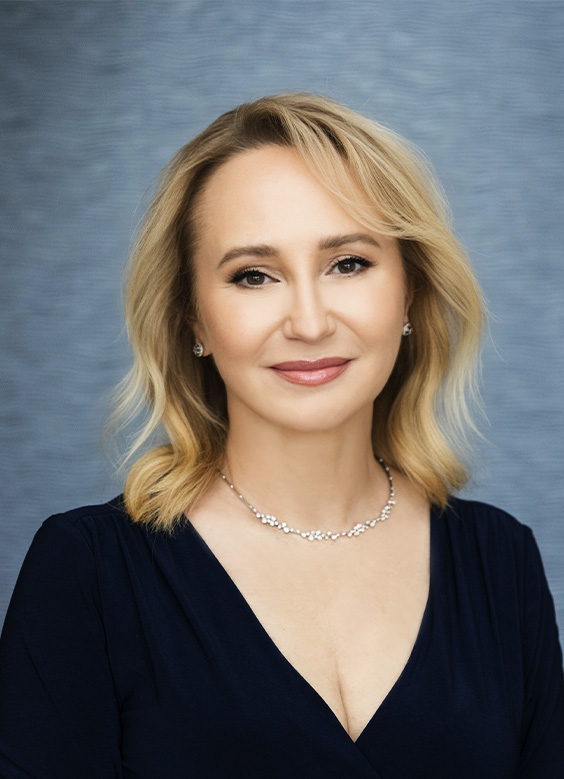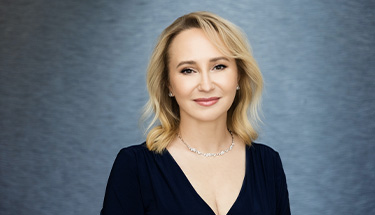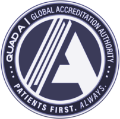Quick Links

The abdominal area can be difficult to tone if you have excess skin or separated abdominal muscles, especially after multiple pregnancies or substantial weight loss. An abdominoplasty, or ‘tummy tuck’, can remove loose skin, remove stretch marks and fat, as well as tighten loose muscles. Dr. Capek frequently performs this popular cosmetic surgery using a variety of techniques that best suit your needs. Patients frequently report that tummy tuck surgery is a ‘life-changing’ procedure that improves their confidence and quality of life.
Is a Tummy Tuck Surgery Right for Me?
If you have some of these concerns, a tummy tuck may be a great solution for you.
- You have excess, flabby, or loose skin on your belly
- You have weak or separated muscles in your abdominal wall after pregnancy or weight loss
- You have difficulty finding clothes that fit because of your protruding belly
- The excess fat and loose skin on your belly do not respond to diet and exercise
- You have so much loose skin that it interferes with your exercise regimen
As with all cosmetic procedures, good health and reasonable expectations of the outcome are important. Dr. Capek will also consider the following before recommending surgery to tummy tuck patients:
- You should not be obese, especially with excess fat internally around your organs (visceral fat). Weight loss prior to tummy tuck surgery may be required to minimize the risk of serious complications and to optimize your cosmetic outcome.
- You cannot smoke for at least 6 weeks before or 6 weeks after this surgery. Major wound healing problems and other life-threatening complications are much more likely in smokers.
- You should be done having children because pregnancy after tummy tuck surgery is likely to stretch your skin and abdominal wall back out of shape. However, a tummy tuck will not interfere with you having a future, safe pregnancy if you choose to do so.
- You can accept the trade-off of permanent scars for the major shape improvement you are likely to see.
Before Your Procedure
An initial consultation with Dr. Capek is necessary to discuss your goals and to review the best course of treatment for your specific abdominal concerns. Dr. Capek uses different types of tummy tuck surgery, often in combination with liposuction, to give you the best possible contour. She will carefully examine you, review your health history, and answer your questions. You will have a thorough understanding of your surgery plan at the end of your visit. Being prepared for the procedure is your first step in ensuring a positive outcome.
As always, you want to be in optimum health when considering elective surgery. Follow a healthy lifestyle, including diet and exercise, don’t smoke since this decreases your body’s ability to heal normally and increases the likelihood of serious complications, and follow your primary care physician’s advice when treating chronic conditions like high blood pressure.


board-certified plastic surgeon
DR. LUCIE CAPEK
Dr. Lucie Capek offers advanced cosmetic plastic surgery from the unique perspective of a female plastic surgeon. Since 1996, she has been serving patients in the Capital District from Albany, Saratoga, Schenectady, and Troy, NY. She is known for using the latest technology to perform body contouring, breast surgery, and facial cosmetic surgery. She personalizes every treatment to give each patient the most natural-looking results, enhancing their beauty and increasing their self-confidence. Above all, her practice is dedicated to your health and wellness. Dr. Capek understands that your beauty and confidence is about more than just your appearance. To schedule your first consultation, contact Lucie Capek, MD.
LEARN MOREYour Procedure
Tummy tuck surgery is typically performed under general anesthesia at our QuadA-accredited office-based operating suite, Capek Surgical Arts, or a hospital operating room. For some patients, especially if you are combining several procedures, Dr. Capek may recommend spending one night in the hospital, where you will have one-on-one nursing care and lots of TLC.
During your operation, Dr. Capek will make incisions based on the type of tummy tuck selected for your particular needs. This is usually very low on the abdomen, just above the pubic area and extending hip-to-hip. In some cases after massive weight loss, a ‘corset’ abdominoplasty may also include a vertical incisions up the central abdomen. Dr. Capek uses the state-of-the-art HARMONIC® scalpel, an ultrasound instrument that has been shown to be gentler on the tissues and results in less bleeding and pain after surgery. In most patients, she uses small drains to remove excess fluid.
In most patients, Dr. Capek also realigns and tightens your abdominal muscles to their optimal position and tightens the fascia with a suture technique that achieves an internal corset. Many patients report improved core strength after ‘rectus and fascial plication’. On occasion, patients may also have a small hernia in the belly button that can be repaired at the same time. Liposuction is typically performed at the same time to fine-tune your tummy contour, and possibly hips, flanks and back rolls, for a natural-looking and smooth 360-degree result.

Types of Tummy Tuck
Full Abdominoplasty
Also known as an abdominoplasty with umbilical transposition, this is the most common abdominoplasty technique we perform. The incisions are located in the lower belly, just above the pubic area, and extend hip-to-hip, as well as within the belly button. This procedure corrects loose, flabby skin both on the upper and lower portions of the stomach. Muscle or fascial repair is usually performed as well. An extended tummy tuck with high lateral tension is sometimes done in patients with extensive loose skin extending onto the hips. Dr. Capek routinely lifts sagging pubic tissues (mons pubis) when performing abdominoplasty surgery.
Mini Tummy Tuck
If you have loose skin and stretch marks only in the lower half of your abdomen, a mini-tummy tuck may be a good option. The belly button is left in place and only the lower abdominal skin is partially removed. Liposuction is usually done to shape the waist and upper abdomen but loose skin above the belly button is not addressed with this procedure.
Mini Tummy Tuck with Umbilical Float
A variation on the mini-tummy tuck, this procedure allows a complete muscle repair to be performed by ‘floating’ the belly button from the low incision. This means there is no belly button scar, but the muscles and fascia, including a diastasis can be fully repaired. This procedure also does NOT address loose skin above the belly button. For that, a full abdominoplasty is needed.
Corset Abdominoplasty
This procedure is usually performed in massive weight loss patients who have large amounts of excess skin in the side-to-side dimension, as well as up-and-down. It is very effective at restoring an hourglass waist as long as you have lost most of your excess internal (visceral) fat as well. The biggest trade-off is the longer and more noticeable scars.
Tummy tuck procedures usually result in a firm, flat abdomen area that allows you to look your best in clothing and bathing suits, and to feel more confident about your figure.
Procedures in 3d
After Your Procedure
The recovery time after a tummy tuck procedure will depend on many factors, including the type of surgery you have as well as your age, health, and fitness level. After your surgery, your may go home the same day or stay overnight at the hospital. You will have drains and a compression garment such as a binder or girdle. You will have detailed instructions and prescription medication to help control your discomfort, and most patients are also prescribed a blood thinner. You can shower 2 days after surgery and your drains will be removed at your follow up 5-6 days after surgery. Most people go back to sedentary work after 10-14 days and longer if your job is active. After surgery, you should be moving around and walking frequently during the day but more strenuous activities that raise your heart rate are restricted for at least 2 weeks.
Full recovery, when you are allowed to resume core abdominal exercises, twisting and high impact fitness, takes about 8 weeks. Dr. Capek and her staff give you detailed instructions to follow after your procedure and their careful monitoring and care will help you recover as quickly as possible. Tummy tuck results are permanent as long as you maintain a healthy diet and exercise routine after surgery.
What are the Risks?
In general, significant complications associated with tummy tucks are infrequent and the satisfaction rate is high. Dr. Capek is an experienced, Board-certified plastic surgeon and has performed hundreds of tummy procedures in accredited operating rooms with the collaboration of board-certified anesthesiologists. However, all surgeries carry some associated risks and complications. These may include bleeding or infection, wound healing problems, seromas (fluid collections), poor-quality scars, blood clots, and reactions to anesthesia. Because tummy tuck surgery has a higher risk of blood clots and embolism that other cosmetic surgeries, Dr. Capek prescribes blood thinners for a short period of time after surgery for most patients. You can help minimize the risks of surgery by following Dr. Capek’s recommendations and aftercare instructions during tummy tuck recovery.

QuadA Accredited
CAPEK SURGICAL ARTS
Dr. Capek is pleased to offer her patients an intimate, comfortable and discreet surgical experience at Capek Surgical Arts (CSA), her state-of-the-art Quad A accredited operating suite right here in Latham, NY. You can undergo your procedure under the expert care of board-certified Plastic Surgeon Dr. Capek and her exceptional team of anesthesia and clinical staff without having to go to a hospital or surgery center.. Cae you can expect with Dr. Capek and her team.
LEARN MORESchedule a Consultation
Patients throughout the Capital District areas of Albany, Schenectady, Troy and Saratoga trust New York Plastic Surgeon Dr. Lucie Capek to perform their abdominoplasty. Patients travel from various states to meet and work with Dr. Capek and her artistry.
Make your consultation appointment with Dr. Capek today to find out more! Our office is just 13 miles from Albany and 9 miles from Schenectady, New York.
SCHEDULE A CONSULTATION
For more information, schedule your consultation appointment with Dr. Capek today!







